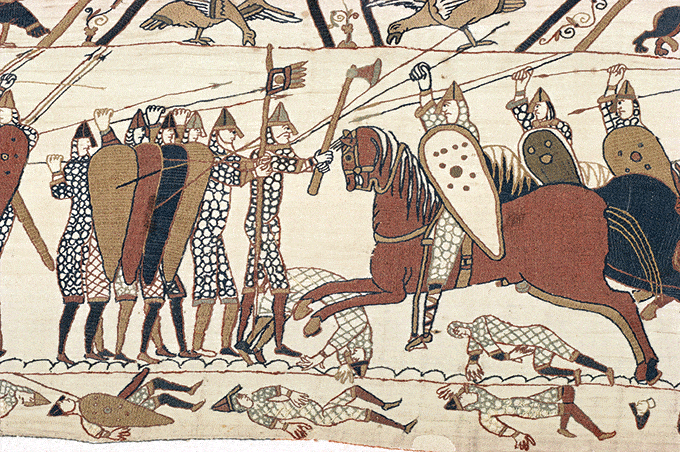
ADVERTISEMENT - CONTINUE READING BELOW
The Battle of Hastings
In 1066, England’s penultimate Anglo-Saxon king, Edward the Confessor, died childless. He had been a weak king, and the real power had been wielded by the Godwin family. Godwin, Earl of Wessex, had secured the throne for Edward, and after the Earl’s death in 1053, his son Harold Godwinson took his place as the power behind the throne.
When Edward died on January 5th, 1066, he granted the kingdom to Harold, who was crowned king, with the backing of the nobility. Harold’s right to the throne was disputed however by his younger brother Tostig, whom Harold had exiled. Tostig’s claim was frivolous, but he secured the support of king Harald Hardrada of Norway, who sought to use him as a puppet king.
A more serious contender was Duke William of Normandy, Edward the Confessor’s cousin on his mother’s side, and his nearest living male relative. Edward had grown up an exile in the Norman court, and had strong bonds of affection to his Norman relatives. Duke William’s claim that Edward had promised him the English throne was thus plausible.
Tostig and Harald Hardrada invaded England first, landing near York in the north of England in September of 1066. King Harold led his Anglo-Saxon army on a forced march, then won a victory at the Battle of Stamford Bridge, in which both Tostig and Harald Hardrada were slain. He did not enjoy the victory for long, however, for word arrived soon thereafter that Duke William had landed with an army in southern England.
Harold gathered his weary army and led it on another forced march to meet the Normans, whom he encountered at Hastings with about 7000 men – only half of England’s trained soldiers. Although advised to wait for reinforcements, Harold opted instead for an immediate battle, to prevent the Normans from devastating the countryside.
ADVERTISEMENT - CONTINUE READING BELOW
On October 14th, 1066, the Anglo-Saxons assembled atop a protected ridge near Hastings, where they formed a shield wall. Unfortunately for them, their tactics and military doctrine, were outdated. Harold’s army was comprised entirely of infantry, without cavalry or archers. The Normans had both, which would prove decisive in the upcoming battle.
Fighting commenced with mounted charges by Norman knights, that failed to break the Anglo-Saxon shield wall. However, feigned retreats drew many of Harold’s men out of formation and into disastrous pursuits, that culminated in the pursuers getting surrounded and destroyed. That thinned the Anglo-Saxon lines, and by late afternoon, the natives were hard pressed, when an arrow struck king Harold in the eye, and killed him. His men broke and scattered soon thereafter.
The victorious William then marched upon and seized London, where he was crowned as King William I on December 25th, 1066. That brought over 600 years of Anglo-Saxon rule, stretching back to Roman times, to an end. In addition to a new dynasty and ruling class, Anglo-Saxon English melded with Norman French to eventually produce modern English. The new rulers also reoriented England from the Scandinavian world, of which it had been a de facto part since the Viking Era, and gave it stronger links to France and continental Europe.

